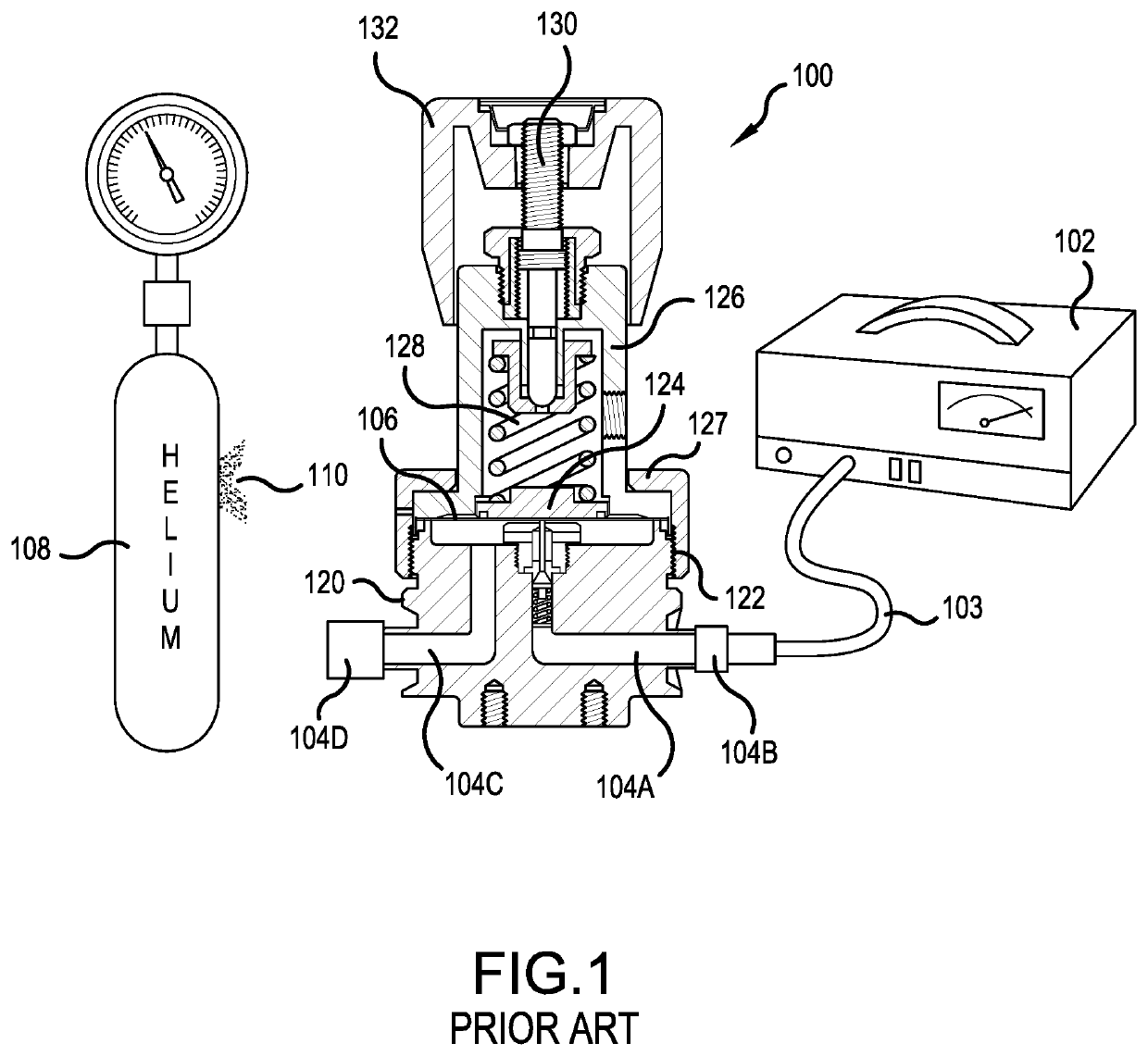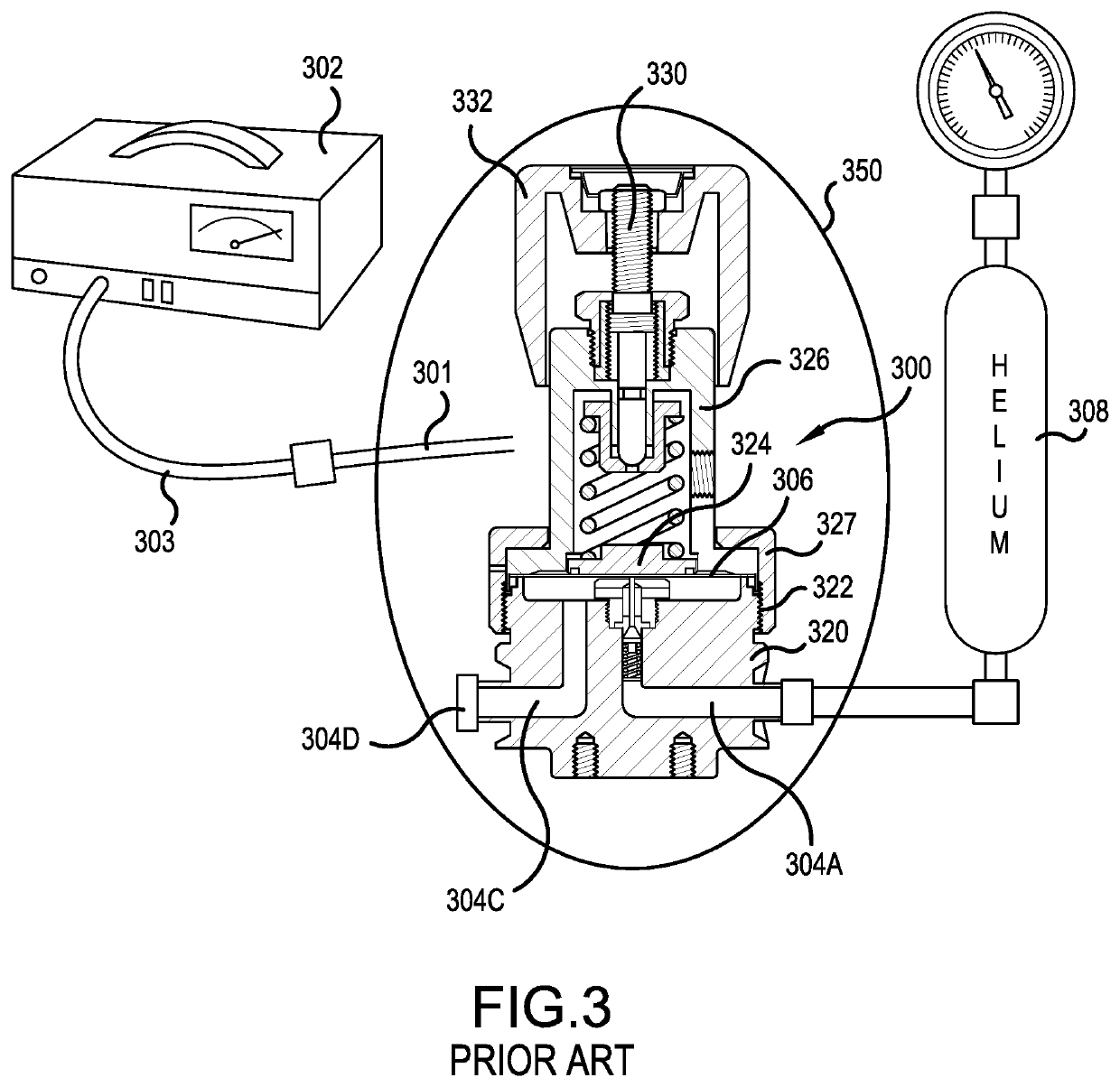Method for pressurized leak testing
a leak detection and pressurized technology, applied in the direction of fluid loss/gain rate measurement, fluid tightness measurement, instruments, etc., can solve the problems of not being able to detect the actual leak point, all testing devices leak to some degree, and no testing device is truly completely helium leak tight, etc., to minimize operator influence and interpretation, the effect of large pressure differential
- Summary
- Abstract
- Description
- Claims
- Application Information
AI Technical Summary
Benefits of technology
Problems solved by technology
Method used
Image
Examples
Embodiment Construction
[0052]The present method places a vacuum on the interior of a device under test and only pressurizes a very small volume on a predetermined area on the outside of the device. Thus, the method according to the present invention uses very little Helium. In addition, if the device under test leaks an individual will know where the leak is located. The present invention provides at least the following advantages:
[0053]1. use of a small volume of Helium;
[0054]2. ability to determine the location of the leak; and
[0055]3. Testing of devices or joints in a large manifold or in configuration not suitable for vacuum bell jar.
[0056]It would be impossible in a prior art testing device to put an entire manifold or piping system in a pressure chamber. According to the method of the present invention, the device under test can be tested after installation. The prior art chamber method does not permit testing after installation. The equipment to test of the present invention may be installed in pip...
PUM
 Login to View More
Login to View More Abstract
Description
Claims
Application Information
 Login to View More
Login to View More - R&D
- Intellectual Property
- Life Sciences
- Materials
- Tech Scout
- Unparalleled Data Quality
- Higher Quality Content
- 60% Fewer Hallucinations
Browse by: Latest US Patents, China's latest patents, Technical Efficacy Thesaurus, Application Domain, Technology Topic, Popular Technical Reports.
© 2025 PatSnap. All rights reserved.Legal|Privacy policy|Modern Slavery Act Transparency Statement|Sitemap|About US| Contact US: help@patsnap.com



